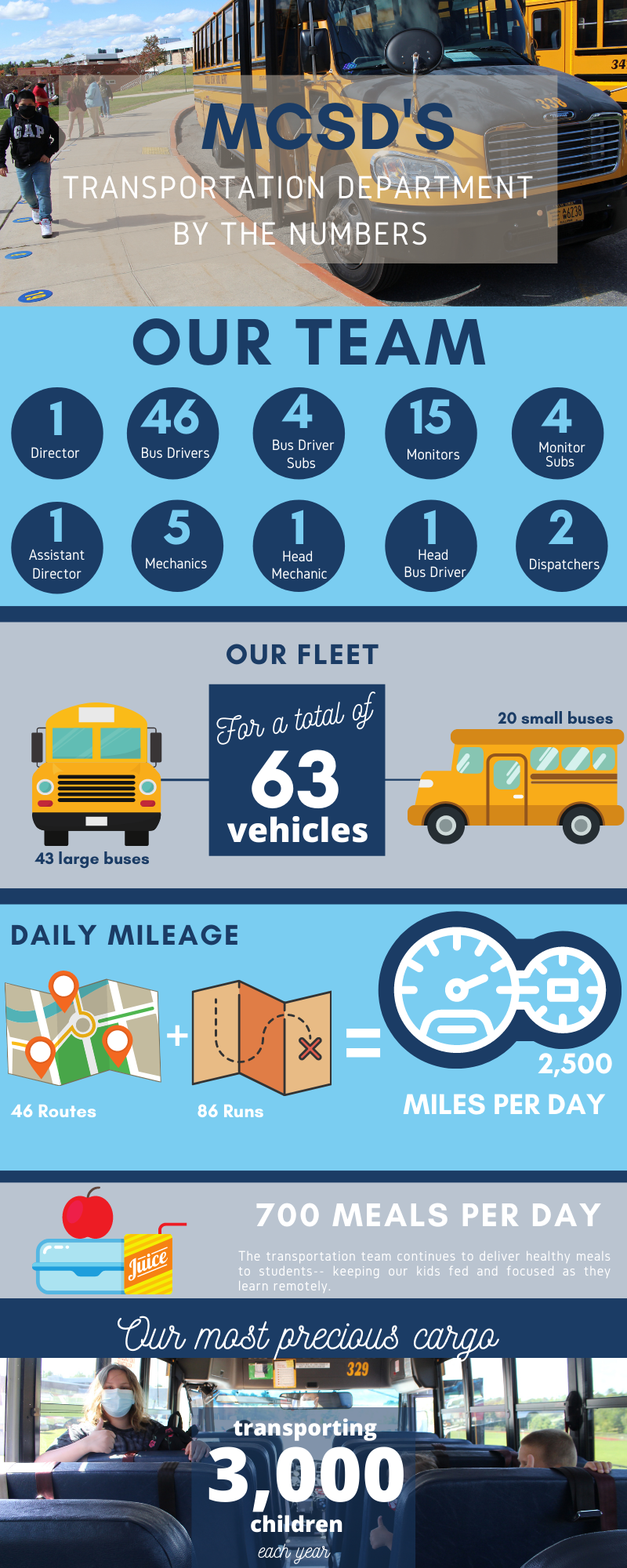A monthly recap from Superintendent of Schools Dr. Matthew Evans
I. Our Schools
George L. Cooke Elementary School: Open Again
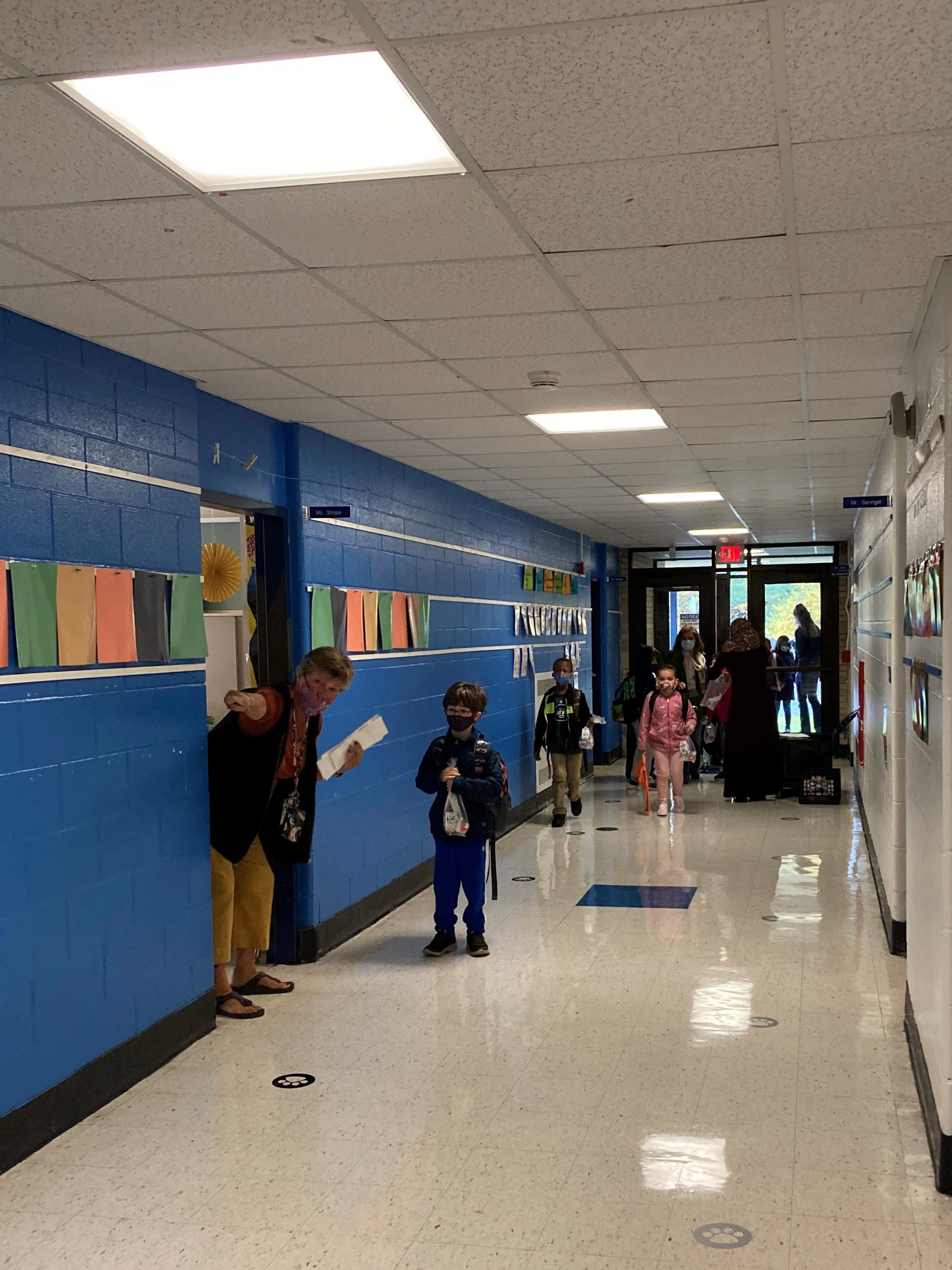
We recently had to, unfortunately, shift Cooke Elementary School to remote learning due to a staff member becoming sick with COVID-19. Once we became aware of the positive test (September 28), we initiated contact tracing and updated Sullivan County Public Health Services. We learned a great deal through this experience:
- Even if individuals are masked and maintain social distancing, they might be considered “contacts” when in an indoor environment and meeting for longer than 10 minutes.
- On average, it takes approximately three (3) to seven (7) days for one to become “sick” with COVID-19 after the initial exposure to a confirmed case.
- COVID-19 positive individuals are contagious—usually—in the 48 hours prior to the start of symptoms.
While Cooke reopened to in-person instruction on October 13, the onset of flu season will present another round of challenges in all our schools as we expect an increase in sick students and staff.
Should I send my child to school? When can my sick child return to school?
The New York State Department of Health recently published a PK–12 “Toolkit,” to better inform parents and school staff on when a child (or staff member) can attend or return to school. Our staff refer to this document when making these determinations on symptomatic students or staff. Please use this “Toolkit” when you need to determine whether your child should attend school.
II. Capital Improvements
Improving Energy Efficiency
Monticello CSD is beginning an energy performance contract through ECG Engineering and Trane Technologies that will improve efficiencies in our lighting and energy control systems. It will also include the replacement of a boiler at the Monticello High School.
Once complete, the district anticipates an energy savings of approximately $145,000, per year, or a reduction of 23% of current annual energy expenses. The largest source of savings will be from enhanced temperature controls in the building automation system. In addition to monetary savings, the new temperature controls will reduce overheating in spaces and improve the learning environment by efficiently controlling the classroom temperatures during the day. This project will be completed in fall 2021.
Tennis Courts
In 2015, voters approved the construction of new courts for a total not to exceed $650,000. These were initially delayed due to initial bids that were overbudget, and to not interfere with the larger capital project that began earlier this year. At its October 15 meeting, the Board of Education authorized the district’s architects (Clark Patterson Lee) to proceed with designs on the construction of five new tennis courts at the High School. Groundbreaking on this work is anticipated for spring 2021.
III. Our Financials
External Audit, 2020
The auditing firm Cooper and Arias presented its annual, external audit of the Monticello Central School District’s finances and controls for the 2019–20. The firm found that “Overall internal controls [were] very good,” and that “Generally everything [was] in accordance with Generally Accepted Accounting Principles (GAAP).”
The audit also provided an update on the district’s current fund balance and reserves. Due to the COVID-19 closure of spring 2020, the district accrued approximately $2.9 million in unassigned fund balance from the 2019–20. The Board of Education will consider how this—and other unexpended funds from the 2019–20 year—can be best used for strategic reserves, application against the tax levy, and/or future capital projects.
It might also be used to off-set the ongoing reductions in school aid from New York State. Since July, the State has not paid approximately $439,185 in aid, that the district generated in the 2019–20 year. We are not aware, at the moment, whether this aid will be distributed later this year, or if it is the start of a larger trend of the State carrying through its threat of reducing aid payments by 20%.
III. Our People
MCSD’s Transportation Department
They’re the first people our students see in the morning and the last people they see when they go home at the end of the day. They’re driving up mountains and down village streets at 3:30 a.m. in the winter to see if the roads will be safe for school to open. They’re doing the repairs and maintenance that keep 63 vehicles that drive 2,500 each day running. They’re members of the Monticello Central School District transportation team, and this month, we’re highlighting these hard-working folks.
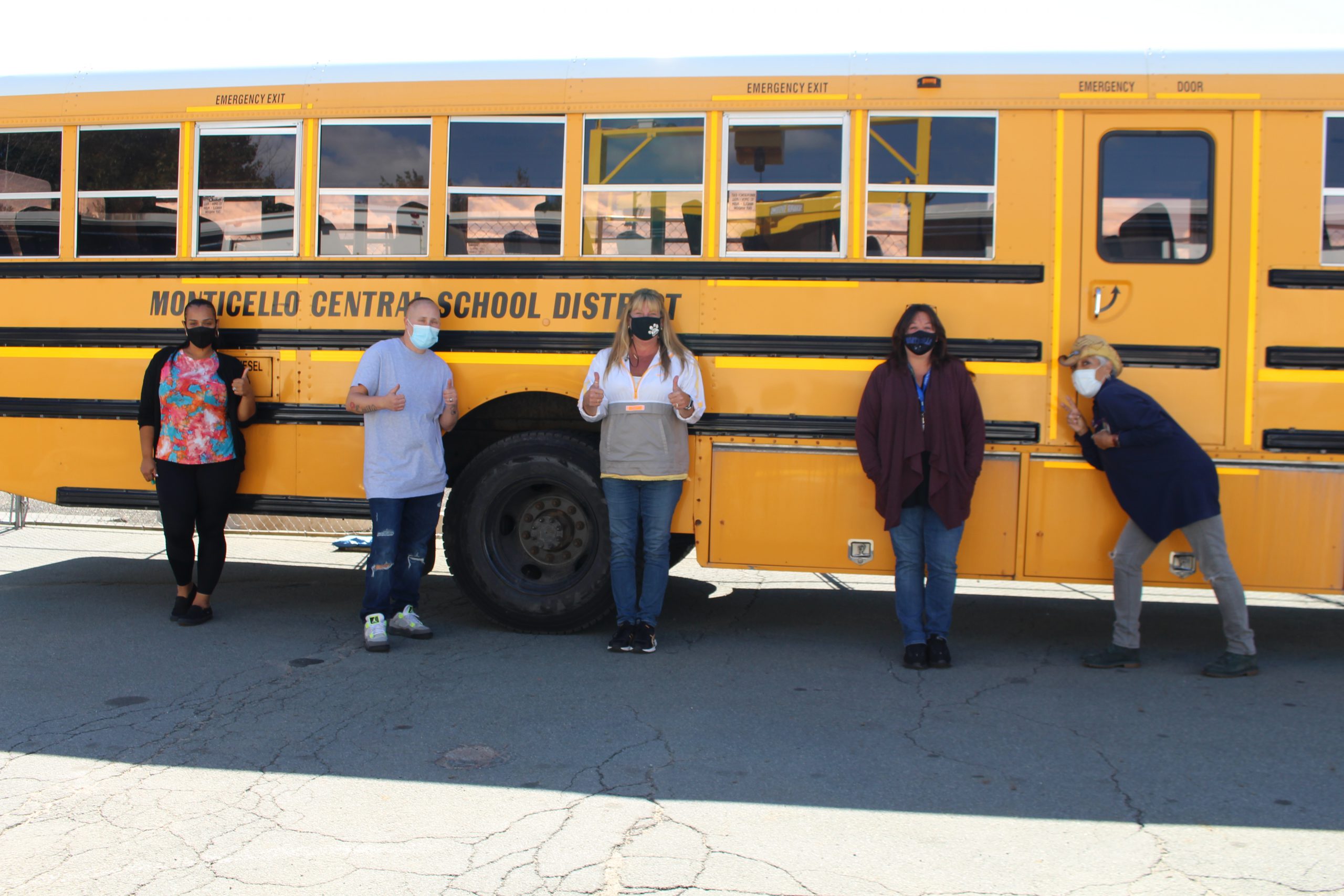
Transporting more than 3,000 children from point A to point B each day is a massive responsibility and as such, there are many federal, state and local laws and procedures governing school transportation. The administrative transportation team is responsible for ensuring that the entire operation — from the employees, to the budget, to the vehicles themselves — stay in compliance with these regulations. School bus drivers must regularly undergo a series of tests, including physical exams, defensive driving courses, as well as tests that are both behind-the-wheel and written. School buses undergo inspections from the Department of Transportation every six months to ensure the vehicles are operating safely.
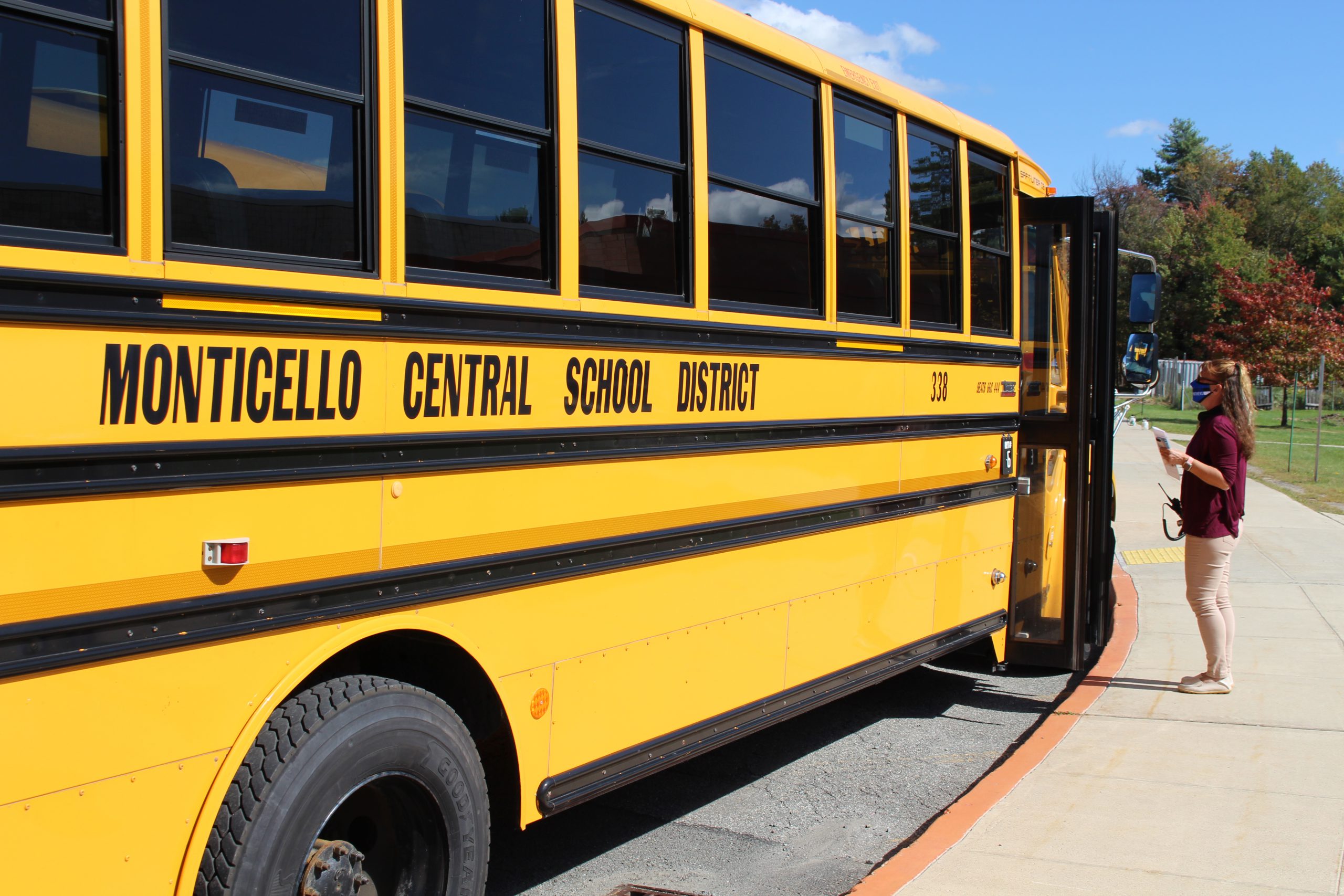
Bus drivers are the face of the transportation department. They’re the first people the students see in the morning and the last people they see when leaving for the day. Despite spending relatively little time with students, they still manage to build strong relationships.
“The kids look up to our drivers,” Director of Transportation Robin Sklar said. “They see the homes, the families and the personal life that many teachers don’t have the opportunity to see. It’s a tough job — a moving classroom taught through a mirror — but Monticello kids are good. They do a good job at listening.”
In the time of COVID, they also serve as cleaners, with each bus driver disinfecting the buses in between runs and also delivering meals to students who are learning remotely.
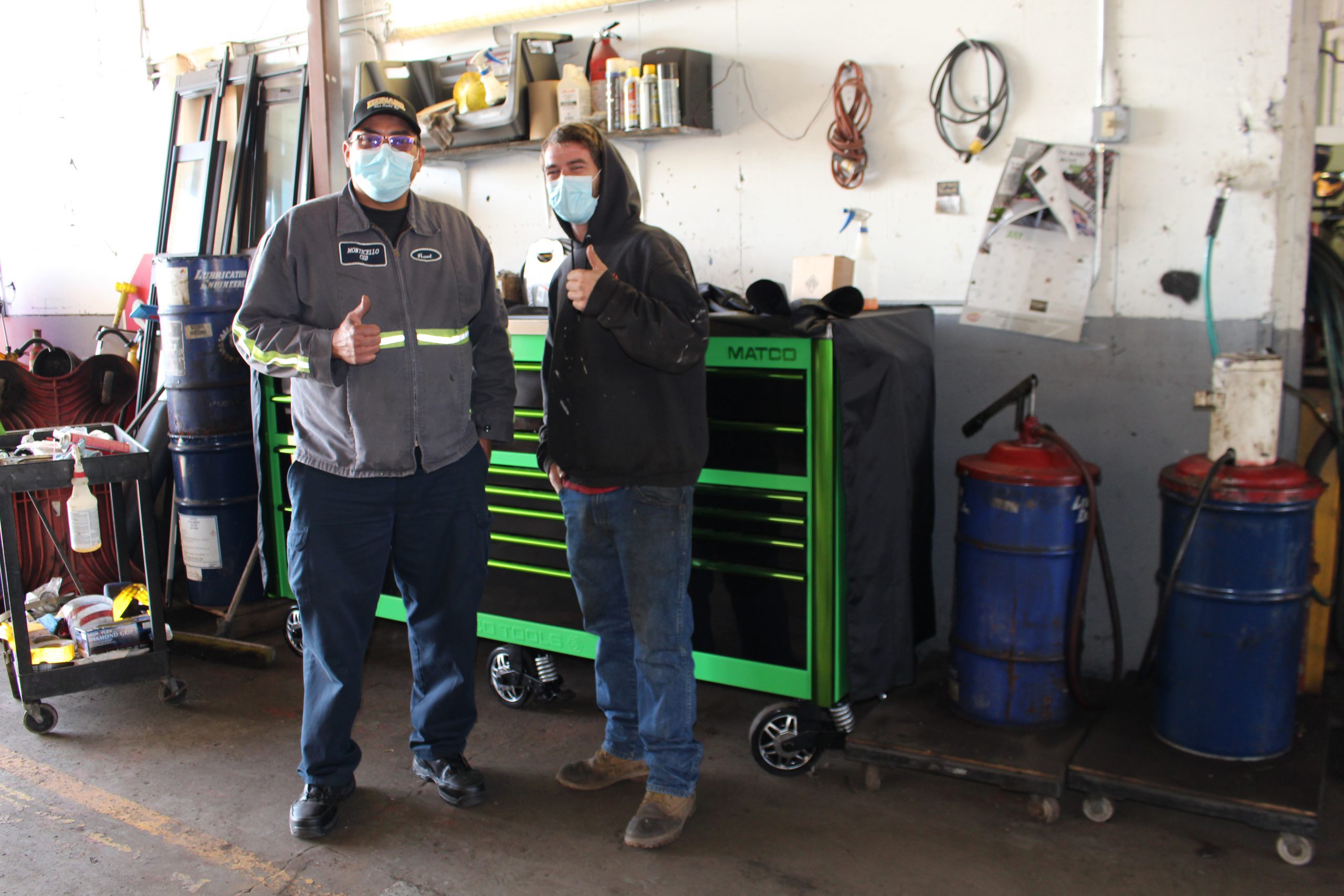 While the bus drivers may be the face of the department, there are plenty of other staff members working behind the scenes. The administrative and clerical staff members ensure that the entire operation is running smoothly and in compliance with all federal, state and local guidelines. Bus monitors assist students with special needs. Dispatchers route the buses and field phone calls. Mechanics maintain the buses, making sure each vehicle is safe and meets the Department of Transportation’s standards, and also perform a deep clean on each bus each night.
While the bus drivers may be the face of the department, there are plenty of other staff members working behind the scenes. The administrative and clerical staff members ensure that the entire operation is running smoothly and in compliance with all federal, state and local guidelines. Bus monitors assist students with special needs. Dispatchers route the buses and field phone calls. Mechanics maintain the buses, making sure each vehicle is safe and meets the Department of Transportation’s standards, and also perform a deep clean on each bus each night.
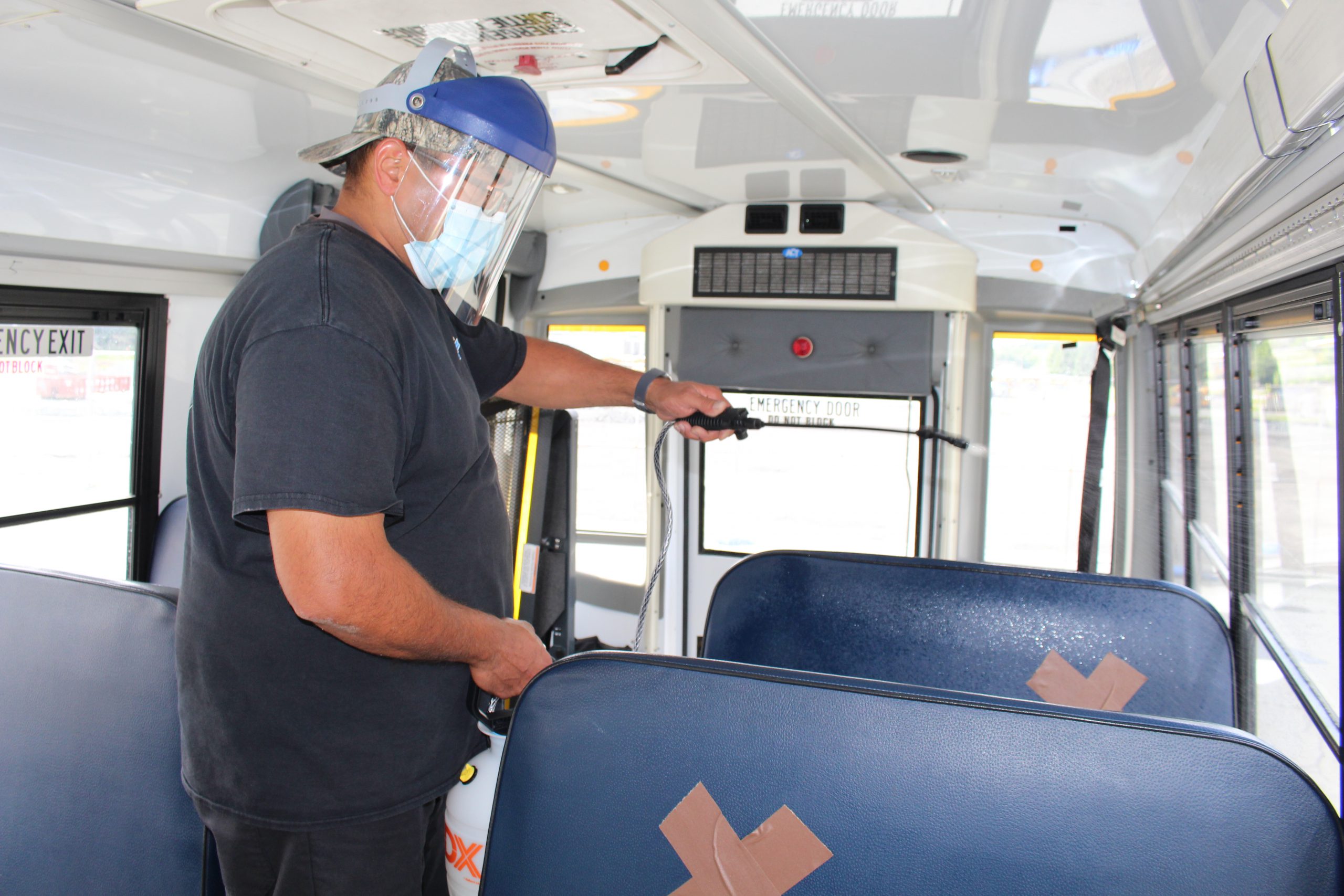
In the morning, members of the transportation team are also the first people to arrive at the district, with the first dispatcher arriving at 5 a.m. In winter weather, they’re out even earlier, with road crews taking off at 3:30 a.m. to evaluate road conditions and help make recommendations on whether school can open.
From early in the morning, well into the evening, this team works diligently to keep our most precious cargo safe, and we are grateful for, and recognize, all of the hard work that comes with that task. Here are some more fun facts about them:
